Being confined at home can make anyone a little bit Genghis Khan, as my cat can attest.
Today’s Song of the Day is “Genghis Khan” by Miike Snow. Please enjoy the video, below.
Home of MagAO and MagAO-X.
Being confined at home can make anyone a little bit Genghis Khan, as my cat can attest.
Today’s Song of the Day is “Genghis Khan” by Miike Snow. Please enjoy the video, below.
From the “such a good adventure that it should be a 6 book novel published as a trilogy” department:
I don’t know about all of you, but for me all of the days have started to blur together. In the mornings I find myself thinking: what activity could I do today so that today is different from yesterday (and the day before that, and the day before that…)? Luckily for me, yesterday night I didn’t have to try as hard. What made last night different from all other nights you might ask? Yesterday my family and I celebrated Passover with a bit of a social distancing twist! For those not in the know, Passover is the most important cultural holiday for Jewish people. A key part of passover is to invite guests to your seder dinner, in particular non-Jewish friends or family who have never experienced a Passover seder before. So this year I invite you all to a small look into what Passover is, and how it is celebrated in my family.
Normally we celebrate passover at my Aunt Wendy’s house becuase she is the head of the family, (Jewish families are matriarchies). This year we celebrated over Zoom. There were about 16 of us, and a lot of the old folks had never used a video chat service before so it was a bit wild.
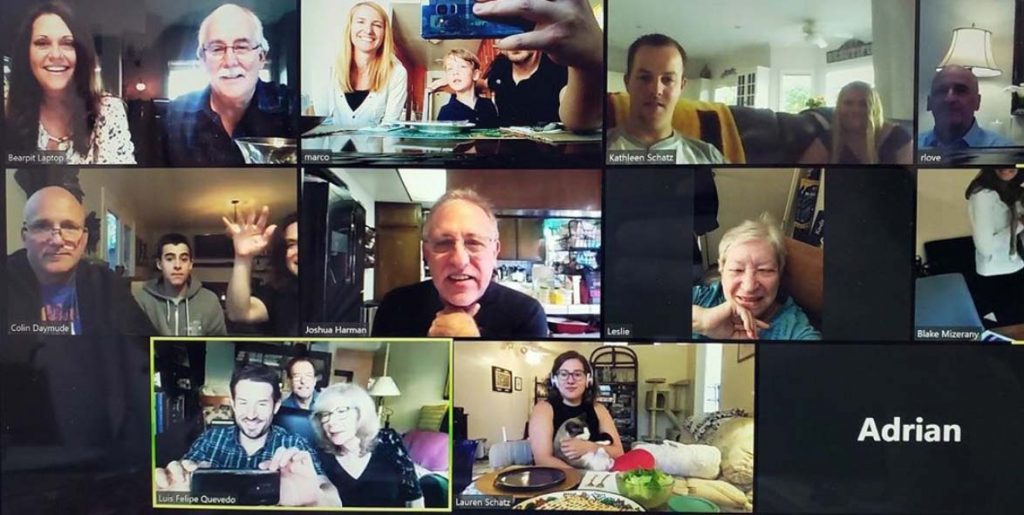
What is Passover? Passover is a Jewish holiday that is based on the story of the Exodus, where Moses helped free the enslaved Hebrew people in Egypt. This is the story of the ten plagues, and Moses parting the sea. The ten plagues were: water to blood, frogs (LOTS of frogs), gnats, flies, cow disease, boils, hail, locusts, darkness, and the killing of the first born child, (coronavirus got a shout out this year). The last plague is how Passover got its name. In the story the Jewish people sacrificed a lamb and painted its blood on their doorway so that the curse would know to ‘passover’ their homes. A part of the seder is expressing remorse over the Egyptian lives lost in the plagues.
To celebrate Passover you have a special dinner called the Passover seder, and read from the Haggadah which is the collection of stories and prayers particular to Passover, and is also a guide on when to present the different ceremonial foods and why.

The most famous of the passover seder foods is matzo (or matzah it is spelled a lot of different ways). The story is that when the Jewish people fled Egypt they had so little time to prepare that they didn’t have time to wait for their bread dough to rise. As they escaped in the desert, the sun baked the dough they carried into matzo. (Maybe a potential cooking experiment to try in the Tucson summer?) We eat matzo on passover to remember their flight from Eygpt.
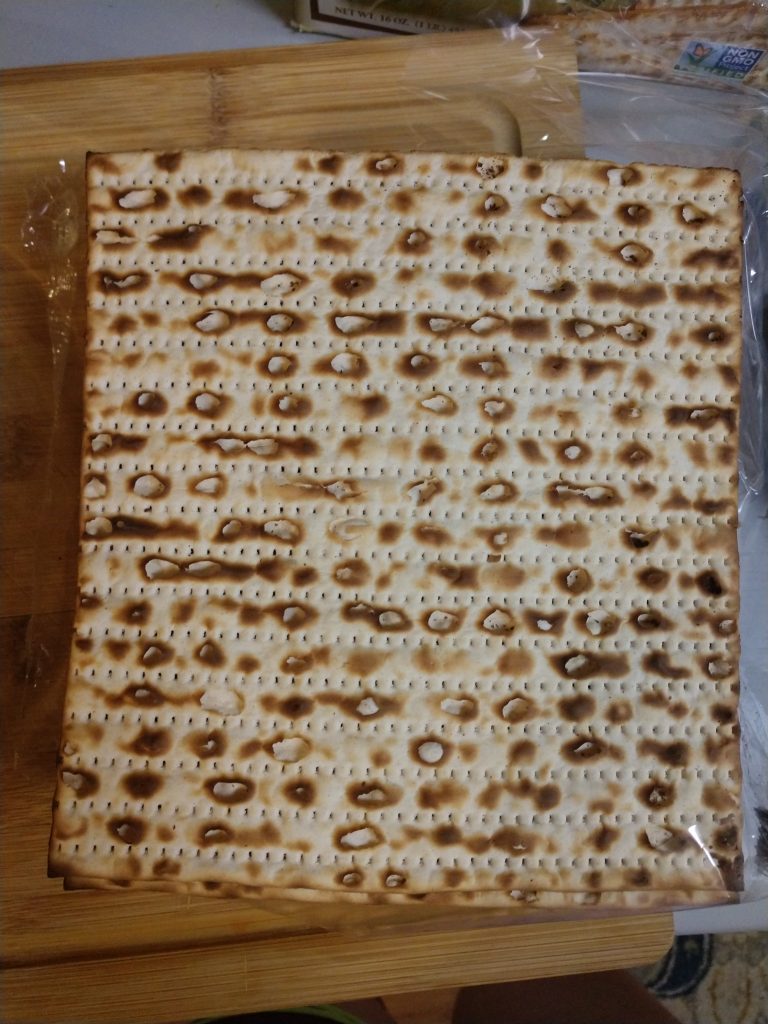
Also featured in the seder:
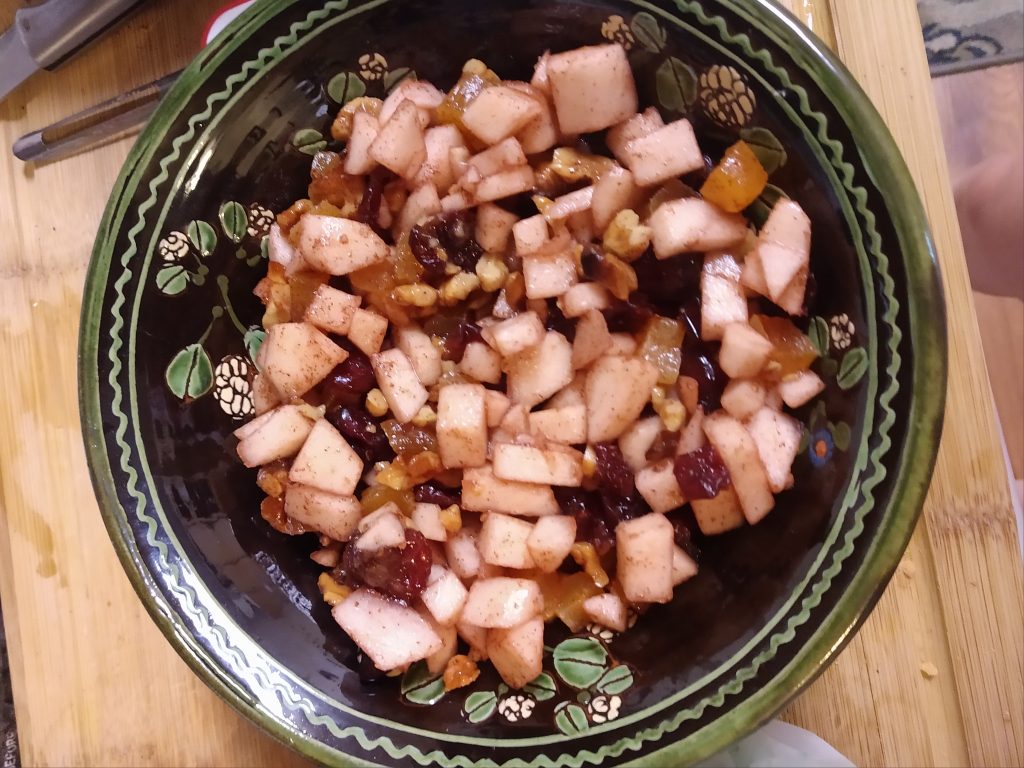
After you tell the story of the exodus, and go through the special seder food, Passover wraps up with a reflection on why it is important to celebrate the holiday. The leader of the seder (usually my Uncle) picks four of the young family members to read the parts of four different types of children who are asking the question of why passover is important. Three of the four are normal (the wise child, the innocent child, the child too young to ask), but the last child is a chance for the leader to throw shade at the punk kid of the family by assigning them the role of the wicked child. This year it was my brother (hehehehe). I was the innocent child 0:)
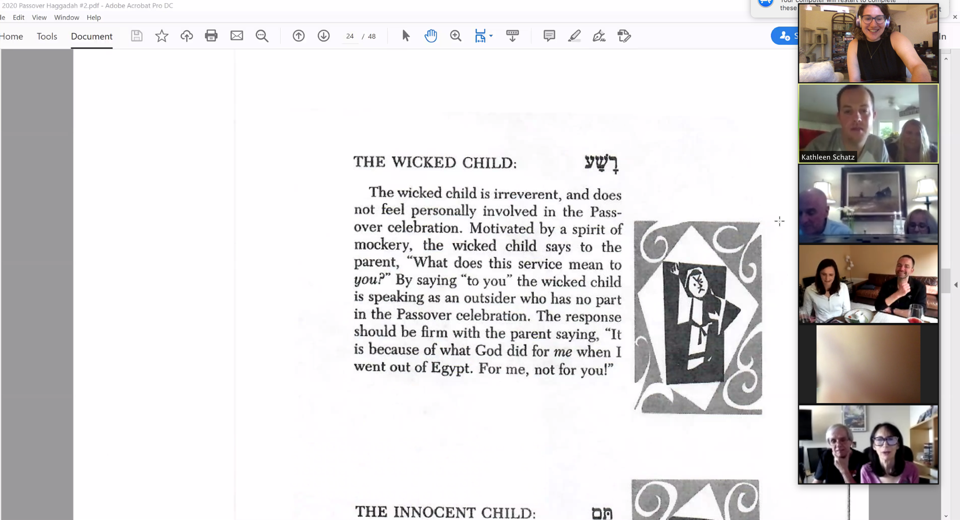
Once the seder wraps up you have a nice family dinner. Usually this is the time my Aunt busts out her famous Matzo ball soup, but sadly this year we decided it would be too much chaos to try to eat together over zoom. Shout out to Joseph and Logan for zooming with me so I didn’t have to eat my fancy dinner by myself.
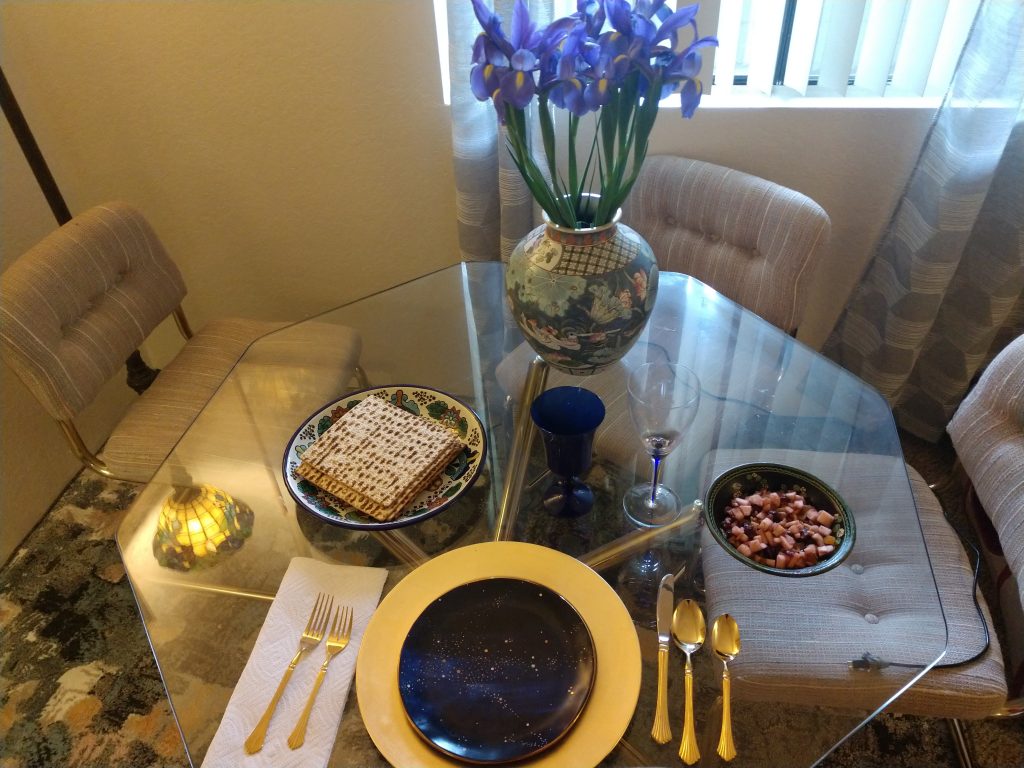
Easter bonus:
Here is some wholesome content of my cat hunting for Easter eggs (kinda she was bad at it).
Hope all of you had a Happy Easter and Passover 🙂
-Lauren
Song of the day: Since I was talking about a lot of mythos today, I thought I would share my favorite song based on the myth of Medusa.
When every weekend is spent at home having a mild time, one must find one’s own diversions. After the cooking is done and the phone calls to friends and family concluded, I scroll idly through the daily output of internet meme-makers. This usually provides a few minutes of distraction, eventually running aground on reposts and old memes.

To avoid doing chores, I have been plumbing successively more obscure sources of memes to waste my time. First, there were the Spanish-language memes.

Eventually those ran into the same problem: reposts.

We had to go deeper. How about… Spanish-language wild-felid social-distancing memes?
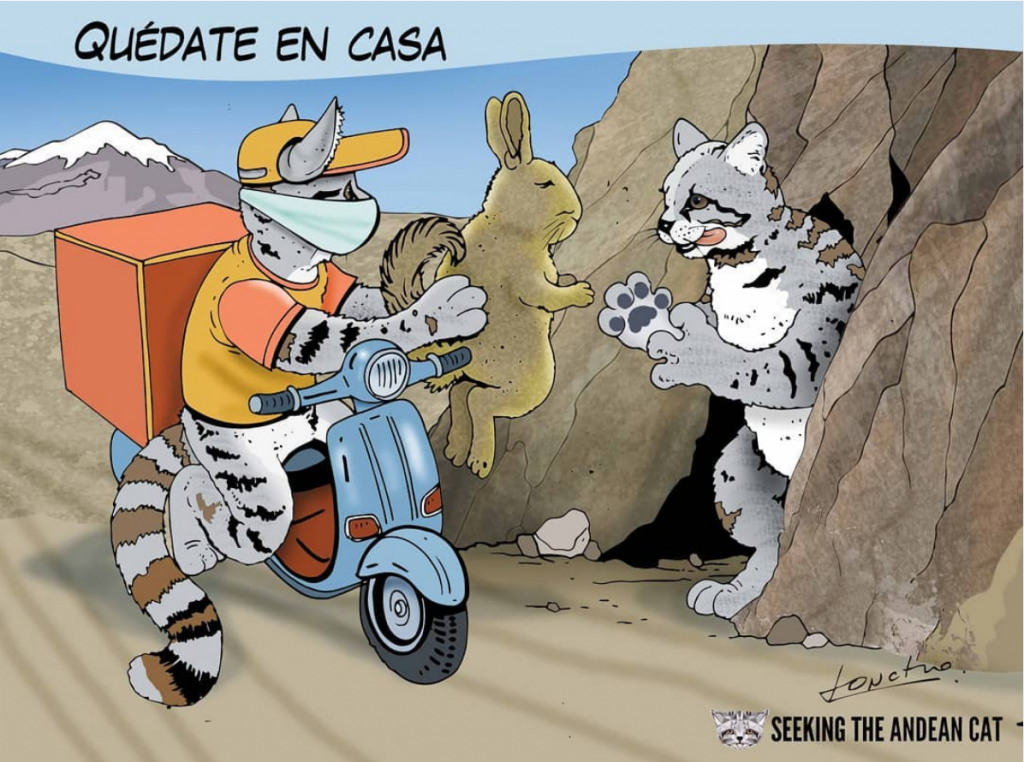
My sister, future wildlife biologist, sent me that one. It’s from the Instagram account @andeancats, a “not-for-profit project [seeking] to develop the first Andean cat documentary in order to raise awareness to people around the world.”
Jared really wants to see an Andean cat at Magellan, if we ever get to go back. He went trawling through their past posts and found this:
Isn’t that just the cutest?
However, even the deepest veins of obscure internet amusements ran out eventually, so I went to work on my DIY fabric masks. But, because I refuse to do anything simply, I had to design my own fabric for social distancing chic.
Which led me, in a roundabout way, to the ISO 7010 standard for registered safety signage. Which, after a month at home, seemed like yet another collection of funny internet pictures.



Eventually, I decided on the following motif for DIY textile crafts in the age of COVID-19:

Happy to report that the fabric and mask project has been a success. Perhaps not in terms of viral particle blocking, but aesthetically. And isn’t that what counts?
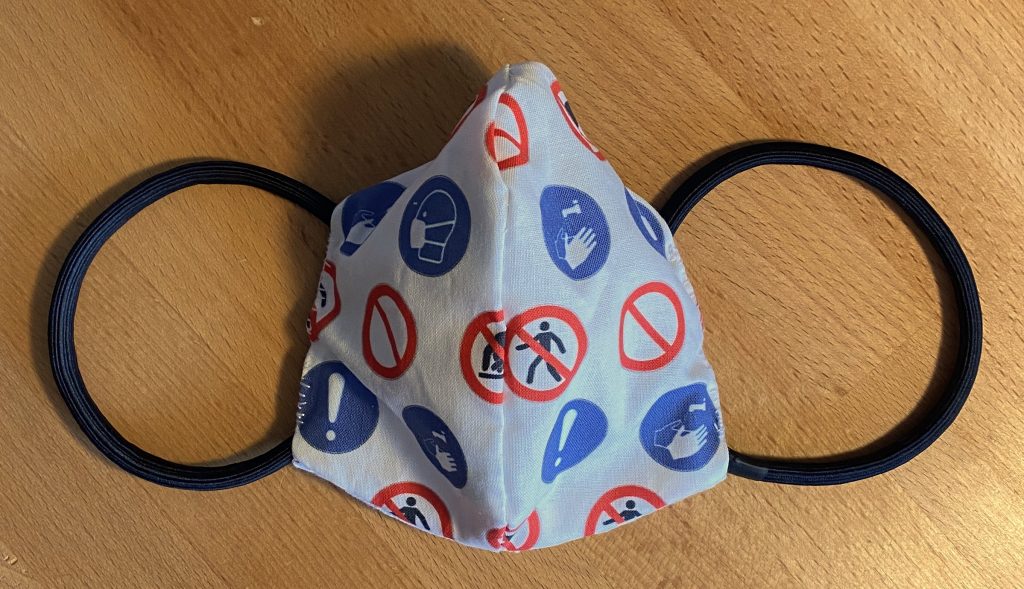
Your song of the day is “The Spot” by Your Smith:
Hello again! Seems like my first blog post was way more than 9 days ago, but that’s the way of things now. March was a hell of a year and April is shaping up much the same. Most days start with a thought like “Wait, is it Tuesday?”. But as I said last time, in the big picture things could be much worse. It’s a matter of one foot in front of the other. Get through this deployment (as Jared said in his jargon-filled Navy retrospective, the current moment feels much like a deployment, only with more sun, less cleaning stations, and more existential dread. I’m finding myself in the same mindset as I had for deployments, and it’s quite helpful.). An interesting trend I’ve noticed in myself trying to do this while class thing is that my motivation level as a function of day of the week seems to be on a linearly descending prior probability distribution. And my productivity posterior distribution is the same shape as the prior. Illustrated by this plot:

But today I wanted to tell you all about Astronomy on Tap (@astronomyontap)! Astronomy on Tap is a collection of local satellite venues that host public astronomy talks, trivia, and games in bars around the world. As of this writing there are 77 different AoT venues past and present, from Chile to Germany to New York to Tucson. When I lived in Austin I was very involved with Astronomy on Tap Austin (AoTATX, @AoTATX), who hosts a huge event at the North Door on the third Tuesday of every month. Austin’s show is one of the biggest, with ~300 people attending every month! It was so much fun, and the other organizers are some of my dear friends.
So when I moved to Tucson, you better believe I jumped right into our local event, which we call Space Drafts (@Space_Drafts)!

Space Drafts takes over Borderlands Brewing on a Wednesday every month, with a couple of public talks by professional astronomers drawn from Steward Observatory, the Lunar Planetary Laboratory, NSF’s OIR Lab, or any of the other space-related institutions nearby (Tucson is such a space town!). It’s an all-levels show – you don’t have to know anything about space or science to enjoy it – and an all ages show, kids and dogs are encouraged to attend. Space Drafts is organized by me, Ryan Boyden of Steward, Cassandra Lejoly of LPL, and Stacey Alberts of Steward. (If you’re local please consider supporting Borderlands during this time!)
But that was in the before times. Our March show was canceled, and we’ve canceled all future shows for the time being. All looked dire for Astronomy on Tap until the intrepid folks at AoTATX figured out how to live stream their monthly show via YouTube and zoom, and it was off to the races (see their first live streamed event here). Which led to what happened yesterday………
Yesterday was Astronomy on Tap’s 7 year orbit-versary. 7 years since the first show(s) began accreting to form the complex system we have today. To celebrate, satellites from around the world came together to put on a 7 HOUR LIVE STREAMED AoT EVENT. For 7 hours, astronomers all over the world took over to give talks on everything astronomy. There were even live games, and the winners are getting prizes mailed to them! It was an EPIC event organized in literally like 3 weeks. They came up with idea ~3 weeks ago. And it all worked!

The event was broken into three 2-hour blocks. The first block (occurring at 12:30pm Tucson time) was hosted by European satellites and featured speakers from Europe. The second was the Eastern US and Canada, and the last block was the Western US, including yours truly. It was organized by Rebecca Larson of AoTATX (@SaturnsWings) and Cameron Hummels of AoT Los Angeles (@astrochum), and they did an AMAZING job. It was so much work and they really pulled it together to put on a fantastic show. I (represening Space Drafts) worked behind the scenes to manage YouTube comments, post social media links and highlights, and wrangle questions from the audience to feed to the hosts and speakers.
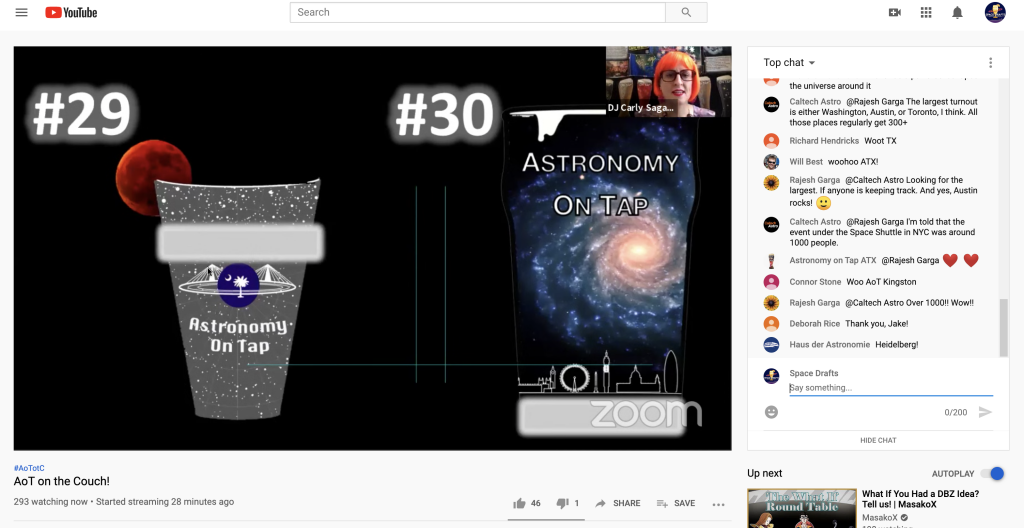
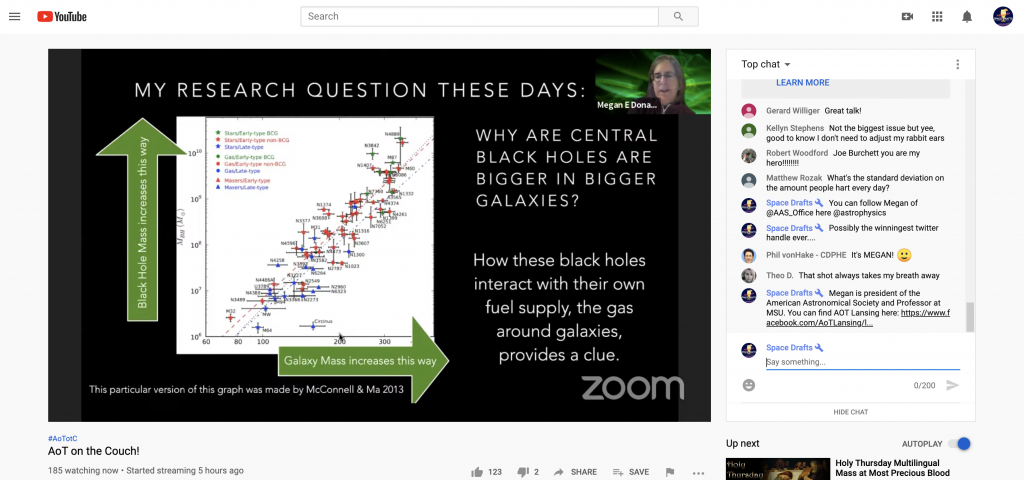
The end of the Western block featured “rapid fire” talks, short 2 min answers to frequently asked questions. Yours truly gave an answer to the question “What is SETI up to these days?”, based on my UG internship I did at Berkeley SETI Research Center.
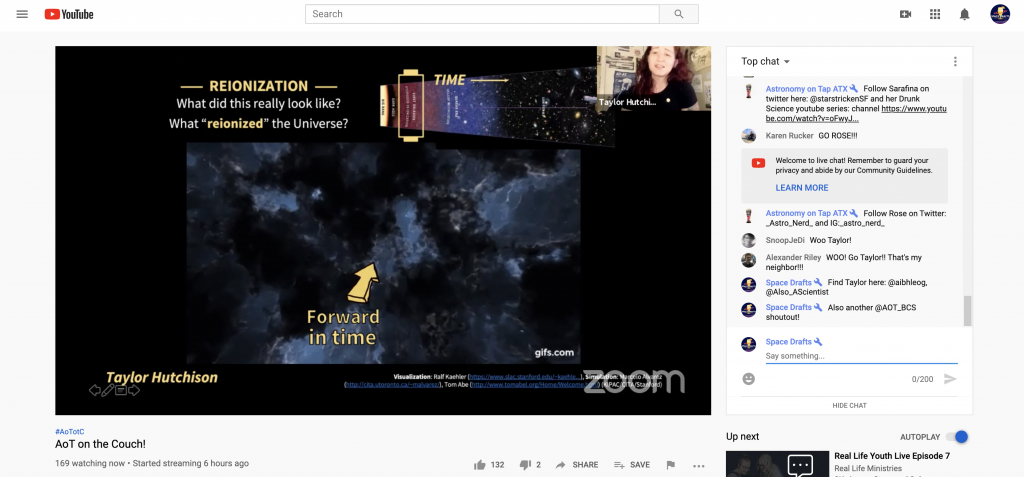
At the end, Bobak Ferdowsi played “Name the Moon”. You might recognize Bobak as “Mohawk Guy” from the Curiosity landing. The YouTube chat was all abuzz at his appearance. https://en.wikipedia.org/wiki/Bobak_Ferdowsi
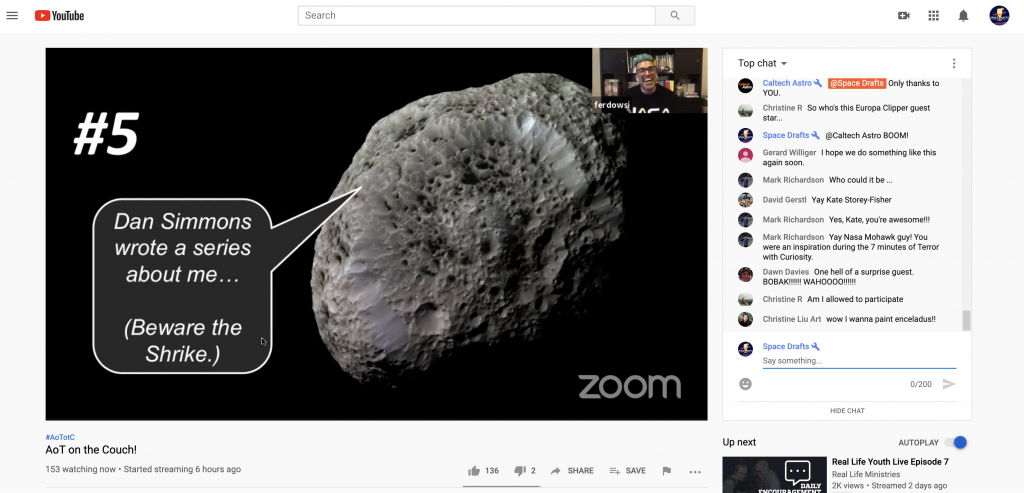
You can see the WHOLE 7 hour event here: https://www.youtube.com/watch?v=RWuQq3ljCpc. (embedding is disabled for this video). Our block starts at timepoint 4:35:00. The whole thing is SUPER great, but I definitely recommend watching the first talk by Andy Howell (@d_a_howell, @ScienceVsCinema, @AoTSB), of AoT Santa Barbara on the science of the movie Arrival, and Jessie Christiansen’s (@aussiastronomer ) drinking game of “Will you survive on this exoplanet” at time point 5:04:00 (spoiler: no). (You can play your own drinking game of Exoplanet Roulette alone in your house here: http://web.ipac.caltech.edu/staff/christia/index.html#roulette). Also check out time point 6:17:00 for no reason at all I don’t know why just check it out….
It was an AMAZING achievement with LOTS of people working hard behind the scenes to pull it off. It was so much fun, a nice chance to do AoT with my ATX friends again, and keep AoT alive in this isolation period.
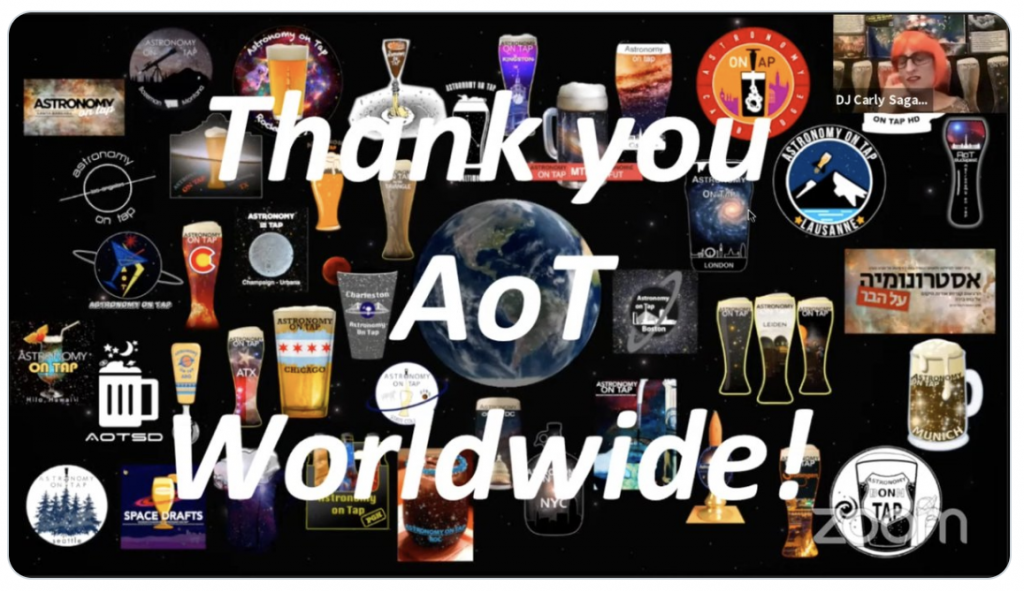
I’m going to look into doing virtual Space Drafts, and you can also watch AoTATX’s regular monthly show on their youtube channel on the third Tuesday of every month. If you’re not in Tucson, there is likely a local show near where ever you live! Go to https://astronomyontap.org/locations/ to find out, and come out and support the live shows when they get rolling again. And support the local venues, which you can also find here, now!!
Today’s song of the day is by musician, Mars exploration microphone scientist, and frequent AoTATX contributor Jason Achilles Mezilis (https://jasonachilles.com/). He is the last “rapid fire” speaker of last night’s show. And I picked this song because I miss Texas.